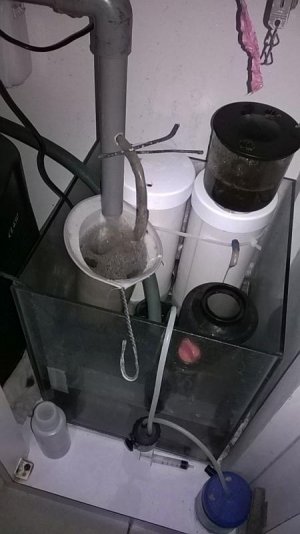JaysLittleOcean
Active member
I have been religiously testing my aquarium water every week without fail. And I have noticed that my nitrates after my cycle have been constantly at 20 ppm for the past few weeks. I can attribute this most likely to the daily feedings of frozen fish food and my filter socks. I'm also not the biggest fan of doing large water changes but that is a completely separate topic. So I need to find a way to reduce my nitrates without using exhaustive media that needs to be replaced frequently as my work schedule would not allow for such things. The answer that I may have found might just be the Deltec NFP509 Nitrate Filter. In a nutshell this little piece of equipment provides a place for the anaerobic bacteria that is responsible for utilizing nitrate and phosphates (from my reading) as part of their food source along with a carbon based fluid (1 part Vodka, 3 parts RO/DI) as their food. The result a Nitrate and Phosphate removing group of bacteria that can put a smile on my face. So lets see if this thing actually works.




Assembly of the unit was simple It consist of just attaching the included Aquabee recirculation pump to the platform at the top of the body and connecting the water exit fitting. There is an included Probe Port that will allow you to install an ORP from your manufacturer of choice. This is an absolutely necessity in my opinion as it will allow you monitor the oxygen level present within the water inside the chamber.










Assembly of the unit was simple It consist of just attaching the included Aquabee recirculation pump to the platform at the top of the body and connecting the water exit fitting. There is an included Probe Port that will allow you to install an ORP from your manufacturer of choice. This is an absolutely necessity in my opinion as it will allow you monitor the oxygen level present within the water inside the chamber.















































